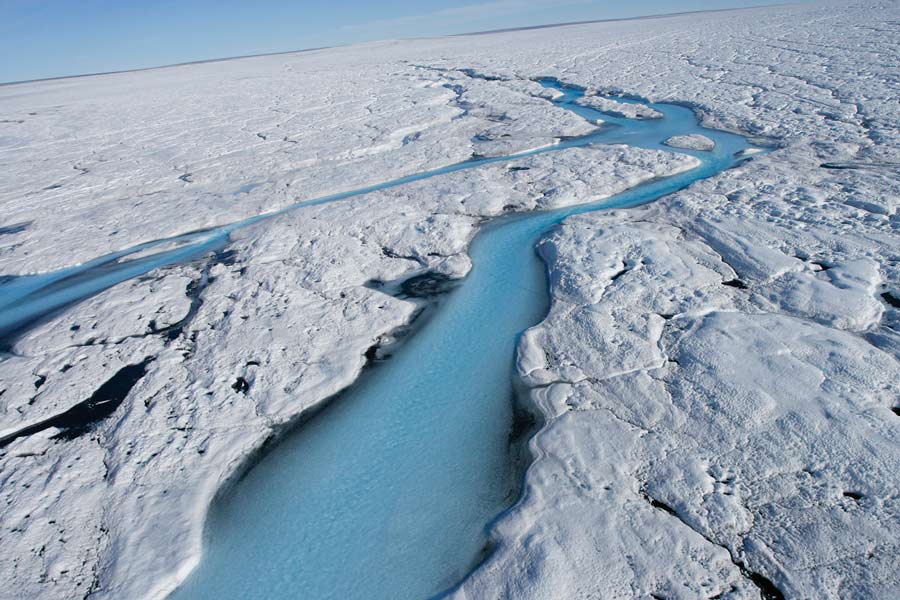The views expressed in our content reflect individual perspectives and do not represent the authoritative views of the Baha'i Faith.
Mention hath been made in certain books of a deluge which caused all that existed on earth, historical records as well as other things, to be destroyed. Moreover, many cataclysms have occurred which have effaced the traces of many events. – Baha’u’llah, Gleanings from the Writings of Baha’u’llah, p. 174.
Anthropogenic climate change is not inevitable; humanity chooses its relationships with the natural world. – the Baha’i International Community, Shared Vision and Shared Volition—Choosing Our Global Future, Statement to the Paris Climate Conference, December, 2015.
Everyone knows the story of Noah and the flood. It originally comes from the Judeo-Christian tradition, right?
Nope. The familiar story in Genesis only represents one of the many versions of this oft-told tale.
Most of the world’s faiths—and ancient civilizations—offer some variant of the common flood myth. It probably started in the ancient farming region of Mesopotamia in what historians call the Old Babylonian period, twenty centuries before Christ, long before the revelation of the Torah. We have at least nine versions of the deluge myth that precede Noah’s; the earliest one known as the Sumerian Flood Story. The most renowned of all those stories—the Epic of Gilgamesh, humanity’s oldest surviving great literary work—dates as far back as 2100 BC. In that story, the Noah role is played by an immortal named Utnapishtim, which means “he found life.”
So just about every culture has a flood story. These deluge myths come from Mesopotamia, from Greek mythology, from Genesis in the Torah, from Norse myth, from Hindu sources in India, from the Qur’an, and from many indigenous peoples like the Mayan and Ojibwa tribal groups in the Americas. What could have inspired such a widespread tale?
Massive floods after the Earth’s last glacial period, which ended about 10,000 years ago, may have been the source of these persistent, widespread cultural myths. During that period, Homo Sapiens finally migrated away from our original home in Africa, and began to populate the warming regions of the Earth. When the geologic epoch called the Last Glacial Period ended and the world started to thaw, the icy glaciers that covered much of the Northern hemisphere melted and receded. Great inland seas formed from glacial meltwater, many times larger than today’s Lake Baikal or the Great Lakes. Sea levels rose rapidly, flooding large areas of previously dry land and pushing coastlines inland. You can imagine how multiple cultures developed their deluge stories when you think about the catastrophic floods that glacial melting created.
Scientists now believe that humanity faces its next period of widespread floods, glacial retreat and rising sea levels, all caused by the warming of the Earth from climate change. This one, they think, will happen much, much faster.
In fact, a major new study by eight climate scientists published in the prestigious journal Nature just discovered that continued high emissions of heat-trapping greenhouse gases could launch a disintegration of the Earth’s two major ice sheets within decades, melting enough water into the ocean to raise sea levels as much as 4-6 feet by the year 2100. If this occurs, it would displace up to half of the world’s population, creating enormous chaos and suffering, and cause tremendous economic damage in the process.

The researchers also found that sea level rise would exponentially increase in the following century, exceeding a foot every decade. Scientists have documented such rapid increases in the distant geologic past, when far larger ice sheets collapsed, but most had long assumed it would be impossible to reach rates so extreme with the smaller ice sheets that now exist in Greenland and Antarctica. That assumption has now proven false—which means humanity faces a catastrophic flood of mythic proportions in the near future.
The scientists who wrote the new report based their conclusions on improvements made to a computerized model of Antarctica that captures newly-recognized factors which imperil the stability of the world’s biggest ice sheet. The new computer modeling tool allows the scientists, for the first time, to reproduce the high sea levels of the past. They can now accurately track sea levels immediately after the last Ice Age, when they were much higher than their current levels, and model the effects of melting ice sheets against those levels in the near future.
How can humanity avoid the worst effects of this manmade crisis?
Baha’is believe in the essential agreement of science and religion, and as a result the Baha’i teachings offer viable solutions to these enormous global problems:
Religion and science provide complementary insights into the shaping of individual and collective life. Both impact choices and priorities, and both will be required in the just and sustainable ordering of the affairs of humankind.
The work of addressing global climate change ultimately revolves around the aim of human lives well lived. This is a goal cherished by people, cultures and religions the world over. In it can therefore be found a powerful point of unity to support the work ahead. – The Baha’i International Community Statement to the Lima, Peru Climate Change Conference, 2008.
What does the phrase “human lives well lived” mean? In the next essay in this series, we’ll look at the Baha’i definition of that term, and explore some of its profound implications for solving the world’s sea level crisis.
Next: Human Lives, Well Lived—Three Steps to Avert Rising Sea Levels

















Comments
Sign in or create an account
Continue with Facebookor